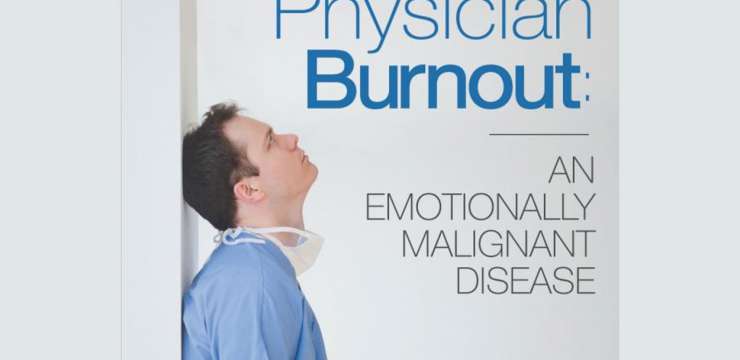There is an overwhelming body of literature that is discussing not only the phenomenon of nurse’s burnout, but its consequences on their health and its effects on patients and healthcare. The past few years have seen a tremendous increase in discussions of this problem that is slowly taking center stage. Burnout is defined as feelings of lack or personal development, becoming cynical and gradual erosion of enthusiasm for work. On average, burnout is present among 50% of the nursing force. Physicians and nurses have the highest levels of burnout among all professions.
There are both external and internal factors for developing burnout among nurses.
1- External reasons:
- Environmental uncertainty
- Long shift hours
- Patient overload
- Organizational mistrust
- Work environment, lack of support
- Job control
- Exposure to traumatic events
- Work space and organization
- Supplies, availability and ancillary support
2- Internal factors:
- Demographic variables
- Lack of self-control
- Self-critical
- Engaging in unhelpful coping strategies
- Sleep deprivation
- Cognitive distortions: Idealism, perfectionism and over commitment
According to JAMA, each additional patient per nurse carries a 23 percent risk of increased burnout and a 15 percent decrease in job satisfaction.
A- Impact
Taking care of our nursing group means taking care of our nurses on and individual, on a unit, and on a hospital level. The actions of nurses and their responsibilities are graded and evaluated on a 52-item scale that measures 6 dimensions. Excellence in these dimensions has been shown to improve patient satisfaction, enhance care, minimize errors, reduce turnover and increase revenue. The six dimensions, according to the Six Dimension Nursing Scale (SDNS) are:
- Leadership (5 items)
- Critical care (7 items)
- Teaching/collaboration (11 items)
- Planning/evaluation (7 items)
- Interpersonal relations/communications (12 items)
- Professional development (10 items)
Conversely, the impact of burnout on the nursing work group includes:
- Professional level:
- Poor work performance and increased mistakes and errors
- Absenteeism
- Presenteeism
- Depersonalization
- Decreased motivation
- High turnover (key predictors cynicism and inadequate rewards)
- Personal level:
- Insomnia
- Fatigue
- Lethargy
- High blood pressure
- Headaches
B- Cost of Burnout:
As has been discussed above, outcome of burnout on nursing is felt by the patient, by the nurse and by the hospital. According to the 2016 National Healthcare Retention & RN Staffing Report, on average, it costs anywhere between 37,700 to 58,400 USD for one nurse turnover! In turn, it has been shown that hospitals may lose anywhere between $5.2 million to $8.1 million annually. (It costs around 250,000 for a single physician turnover). Burnout (with all its reasons and consequences) and salary are listed among the top 6 reasons for nurse turnover. The other reasons include moving, personal matters, retirement, and promotion, which have nothing to do with the job itself.
C- Interventions to combat nurse’s burnout
As with all disease, it is much easier and cheaper to prevent burnout than to treat it. However, the treatment is still MUCH SAFER and CHEAPER in terms of outcomes on the nurses, on the patients and on the bottom line for the hospital than doing nothing. Two major interventional approaches have been studied and have been found to have the greatest impacts on burnout: Wellness/self-care and Emotional Intelligence (EQ).
1. Emotional Intelligence
EQ has been shown to:
- Positively contribute to the nurse-patient relationship
- Increase empathy
- Enhance teamwork
- Improve communication
- Help with stress management
- Develop and maintain organizational commitment
- Improve upon physician and nurse career satisfaction, and effective leadership
Several dozen nursing research studies demonstrate:
- A correlation between EQ and performance of nurses
- EQ and nurse retention
- EQ and stress adaptation
- EQ and organizational citizenship (one of the most important factors in retaining nurses!!)
- EQ and selected positive patient clinical outcomes
2- Wellness
In the most direct and simplistic of facts, wellness protects, mitigates and helps treat burnout. Although recovery from burnout is possible, prevention is a better strategy.
- Physicians/nurses who actively nurture and protect their personal and professional well-being on all levels—physical, emotional, psychological, and spiritual—are more likely to prevent burnout or at least mitigate its consequences
- The promotion of personal wellness needs to occur throughout the professional life cycle of physicians/nurses.
- Individual, institutional, organizational and governmental level changes have to be made to enhance nurse’s wellness.
Moving forward, it is evident that there is an urgent need to recognize burnout, prevent it and treat it. The approach to doing so needs to be on an individual level and an organizational level. Using EI and wellness, as has been validated by numerous research and literature findings, will not only enhance the wellbeing of the work force, but will lead to improvement along the six dimensions of nursing performance. Further, it will correlate directly with enhance workforce retention and minimizing cost.
Naim El-Aswad, MD
Chief Medical Officer
Vital Signs Vital Skills, L.L.C.




